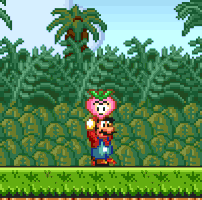In my project I'm making a game like Super Mario Bros 2 where you can pick up and throw enemies. I've figured out the picking up part, but I'm trying to think how to create a throwing function.
I wasn't sure if you can apply forces to CharacterBody2D because I know stuff like "apply_impulse" is only for RigidBody2Ds, but people say you should use CharacterBody2D for enemies.
Any idea of how I could throw a CharacterBody2D forward? (and then naturally they'd fall downward from the effects of gravity) or should I try different solutions, like making the enemy a rigid body?
Kind of like this:


